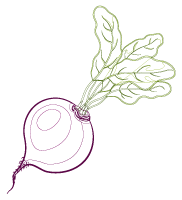When I was in high school we took a family road trip to Florida. On the way down while passing a field of cows my grandmother, Rose, calmly asked what the difference between brown and white cows. Me being a smart aleck teenager I responded, “Well,..you see, the white cows make white milk and the brown cows make chocolate milk.” Her response clearly tolerant of my teenage disposition, “Oh I see.”
I am so glad that I have grown out of that stage.
However, recently I was asked another question about milk, to which I did not have a smart aleck answer.
What is milk intolerance? Is it the same as a milk allergy?
It is important to note that a milk intolerance is not a food allergy. A milk intolerance means that a person does not have the ability to break down or digest lactose, the sugar found in milk. The lactose molecule is not digested properly causing symptoms like bloating, cramping, intestinal discomfort, nausea, diarrhea, flatulence, cramps, etc…
This differs from an allergy in that an allergy is an over reaction of immune response to something recognized as foreign, usually a protein. So a milk allegry would be an inappropriate, exaggerated immune immune response to a particular protein in milk. The symptoms include coughing, itching, rash, sneezing,… A person with a milk allergy must completely avoid milk products.
A milk intolerance, which is caused by a lack of the enzyme lactase, can be combatted by taking a lactase enzyme replacement. Some people may be able to tolerate small amounts of milk with meals, cheese, yogurt, or goats milk. Other options include lactose free products like sot milk or milk with lactase added.
For people with these issues dairy can problems, but people without milk intolerance and allergies dairy products are perfectly fine to consume in appropriate proportions.

